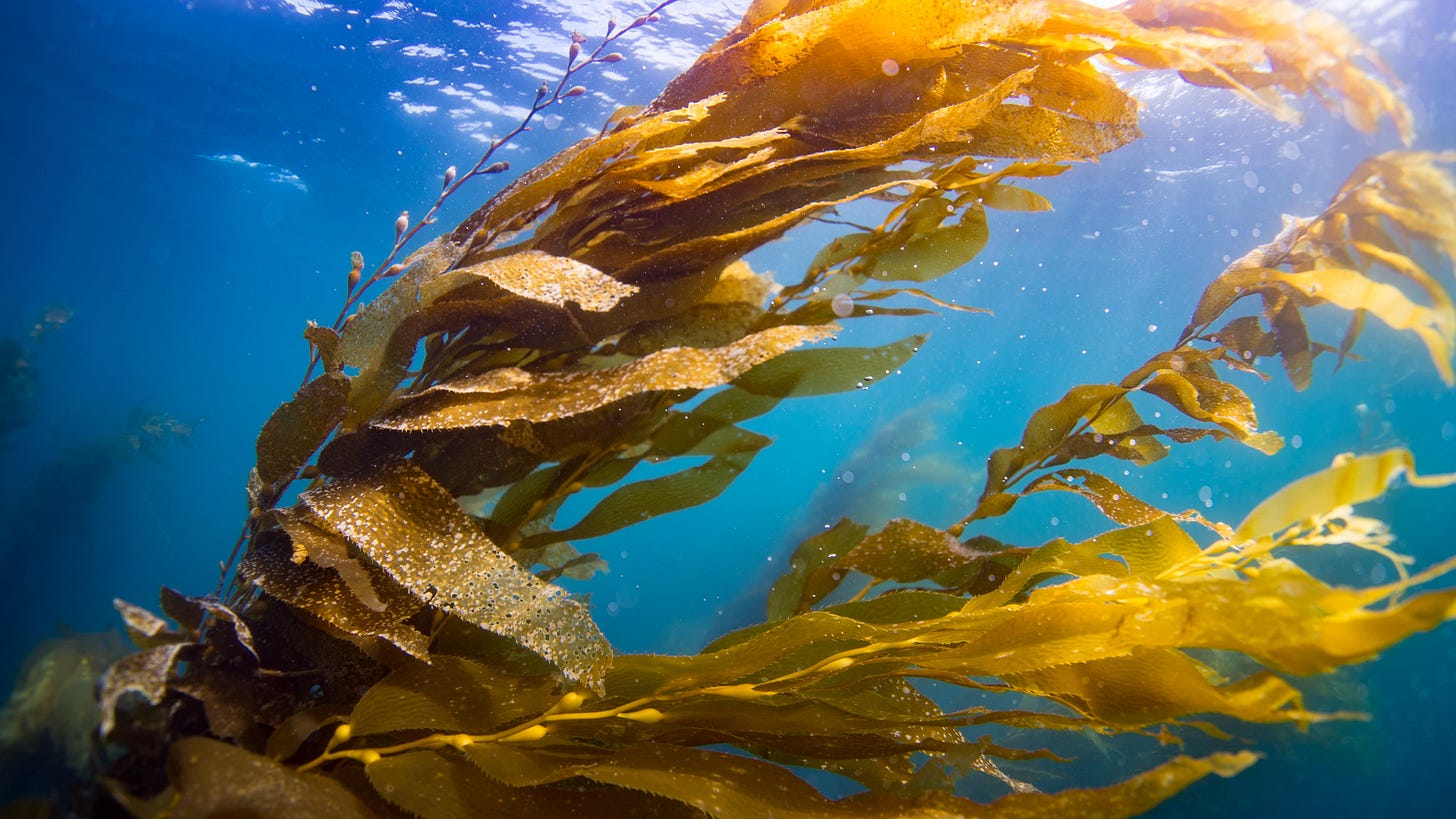The no-bullshit way to repair the climate
If you want to capture carbon at scale, ocean photosynthesis is the only game in town
This month, I joined the Anthropocene Institute as Director of Climate Repair. I’m ecstatic. Because look, there are plenty of climate NGOs out there, and all of them say they’re focused on solutions. It’s just that the ‘solutions’ they have in mind are mostly Davos-ready feel-good claptrap: the kind of bullshit that got us into this mess in the first place.
Anthropocene isn’t like that. Impatience with bullshit is in its organizational DNA. I just joined, and it already feels like home.
So why climate repair? Because the thermodynamic, economic, and political reality is that we can’t reduce greenhouse gas emissions quickly enough to avert huge climate risks. We could spend a long time discussing why that’s the case, but in the end we’d only circle back to realizing that emissions reductions alone won’t save us.
Once you digest that reality, once you stop raging against it and absorb its implication, you’re left with just two options: you can throw in the towel on the human race, or you can take a serious look at the real options we still have.
Because, if you reason from first principles, you realize we do have real options. They fall into two categories. We can try to enhance earth albedo, so the planet reflects more solar energy away from the atmosphere and out into space. Or we can try to increase the rate at which we take carbon dioxide (and other greenhouse gases) out of the atmosphere.
The first category —albedo enhancement— deserves study. The problem is that it will take at least a decade of scientific work and R&D before it’s ready for deployment.
The second category —climate dioxide removal— includes one family of techniques that are ready to go. Right now.
And they have one thing in common: they all happen out at sea.
The world’s oceans already hold 50 times as much carbon as the atmosphere, and they could absorb much more. They’ve done so many times in earth history. Indeed, they do it naturally whenever they get enough nutrients for ocean vegetation to thrive.
Photosynthesis does all the heavy lifting. Nature has already designed organisms able to suck CO2 out of the atmosphere at scale. They are already in the water. Some of them are so tiny you need a microscope to see them, others are big enough to get tangled in your hair when you go to the beach.
Our task is straightforward: we need to fertilize them. Intelligently. On an ongoing basis.
Nature does this all the time: desert dust fertilizes oceans every day, as does the ash from forest fires and volcanoes, and even the minerals in hydrothermal vents. Our role is just to mimic these natural processes at scale. It wouldn’t be that expensive. The main unintended consequence is likely to be simply more ocean life, at every scale: more plankton, more krill, more crustaceans, more shellfish and finfish, more dolphins, more whales, more everything.
To be sure, we have a huge amount to learn. What bits of ocean to fertilize. When. How much. How. How to measure the carbon fluxes that result. How to track the impact on ocean acidity. How to monitor surrounding ecosystems and fishing hauls. How to track what it does to livelihoods in coastal communities, and to human food security. How to track its impact on marine clouds. How to maximize the likelihood of longterm carbon sequestration. How to talk about it all to the public. How to build consensus for it. How to finance it all.
We have a lot of work to do.
But when it comes to the “what?” — well, the more I learn about it, the less mysterious it seems to me.
We need to take carbon out of the atmosphere using the method nature invented —photosynthesis. We then need to store it in the only place that can hold tens or hundreds of gigatons of carbon safely — the ocean depths.
We need to reforest not the land —where carbon dioxide removal competes with farming and wildlife ecosystems for scarce space— but the vast expanses of the oceans, where space won’t run out any time soon. We need to mimic what nature does ahead of each ice age. And we need to do it responsibly and successfully.
Leveraging photosynthesis to capture billions of tons of carbon and stash it in the ocean depths is the zero bullshit way to repair the climate.
I, for one, am all in.



This is an interesting and urgent perspective, but it oversimplifies some key challenges. Ocean fertilization may be a viable carbon removal strategy, but it’s far from a risk-free “only game in town.” Large-scale interventions could disrupt marine ecosystems, trigger dead zones, or result in carbon quickly re-released into the atmosphere. Past experiments have shown mixed results, and international regulations exist for a reason.
Dismissing emissions reduction as too slow is also misleading—removing carbon while continuing to emit at current rates is like bailing out a sinking ship without plugging the hole. A diverse approach combining emissions cuts, ocean and land-based CDR, and responsible climate interventions is far more realistic than betting everything on one high-risk method. Urgency is crucial, but so is scientific caution.
Congrats on your new job! Good luck with all that work, it sounds like you have that sweet spot of 'productive, but rewarding' to dig into. Whenever it's ready, I wish you all the best in getting whatever government buy-in you'll need.